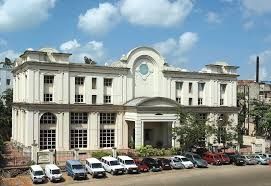Manas Dasgupta
NEW DELHI, Jan 1: India’s Goods and Service Tax (GST) revenue has continued to show growth in the last 10 months and so is the country’s unemployment rate. While India’s GST revenues rose to nearly ₹1.5 lakh crore in December 2022, 15% higher than a year ago, India’s unemployment rate rose to 8.30% in December, highest in 16 months, from 8.00% in the previous month, data from the Centre for Monitoring Indian Economy (CMIE) showed on Sunday.
India’s GST revenue in December 2.5% over November’s collections that had marked a three-month low. This is the tenth month in a row that GST collections have crossed the ₹1.4 lakh crore mark, with revenues from import of goods rising 8% and revenues from domestic transactions (including import of services) up 18% from the revenues yielded by these sources during December 2021, the finance ministry said.
The CMIE data showed the urban unemployment rate rose to 10.09% in December from 8.96% in the previous month, while the rural unemployment rate slipped to 7.44% from 7.55%, the data showed.
Mahesh Vyas, managing director of the CMIE, said the rise in the unemployment rate was “not as bad as it may seem,” as it came on top of a healthy increase in the labour participation rate which shot up to 40.48% in December, the highest in 12 months. “Most importantly, the employment rate has increased in December to 37.1%, which again is the highest since January 2022,” he said.
Containing high inflation and creating jobs for millions of young people entering the job market remain the biggest challenge for Prime Minister Narendra Modi’s administration ahead of Lok Sabha elections in 2024.
“India needs to move from a single focus on GDP growth to growth with employment, skilling of youth and creating production capacities with export prospects,” Rahul Gandhi, senior leader of the Congress party, who is leading party’s 3,500 kilometre(2,175 mile) march on foot, told reporters on Saturday.
The unemployment rate had declined to 7.2% in the July-September quarter compared to 7.6% in the previous quarter, according to separate quarterly data compiled by state run National Statistical Office (NSO) and released in November. In December, the unemployment rate rose to 37.4% in Haryana, followed by 28.5% in Rajasthan and 20.8% in Delhi, CMIE data showed.
The gross GST revenue collected during December 2022, which reflect transactions undertaken in November, is ₹1,49,507 crore, of which Central GST (CGST) is ₹26,711 crore, State GST (SGST) is ₹33,357 crore, Integrated GST (IGST) is ₹78,434 crore (including ₹40,263 crore collected on import of goods) and Cess is ₹11,005 crore (including ₹850 crore collected on import of goods), the Finance Ministry said.
“The Government has settled ₹36,669 crore to the CGST and ₹31,094 crore to SGST from IGST as regular settlement. The total revenue of Centre and the States after regular settlements in the month of December 2022 is ₹63,380 crore for CGST and ₹64,451 crore for the SGST,” it added.
On a sequential basis, while there was a 2.5% rise in revenues from November to December 2022, the number of e-way bills generated went up 3.95% to 7.9 crore in December.
While revenues from domestic transactions rose 18% overall, a dozen States recorded higher growth in tax collections and 13 States reported slower growth rates. Goa, Odisha and Manipur reported a contraction in revenues of 22%, 6% and 5%, respectively, even as Chhatisgarh’s revenues were flat year-on-year.
Bihar reported the highest growth in revenues at 36%, followed by Nagaland (30%), the erstwhile State of Jammu and Kashmir (28%), Arunachal Pradesh (27%), with Gujarat and Andhra Pradesh seeing GST inflows rise by 26% each. Tamil Nadu’s revenues rose 25%, followed closely by Rajasthan and West Bengal (24%), Madhya Pradesh (22%) and Maharashtra (20%).
Among the Union Territories, Ladakh reported a sharp 68% spike in revenues, followed by Dadra Nagar Haveli (37%), Chandigarh (33%) and Puducherry (30%). However, Daman and Diu reported a whopping 86% drop in GST collections, with Lakshadweep and Andaman and Nicobar Islands also recording contractions of 36% and 19%, respectively.

